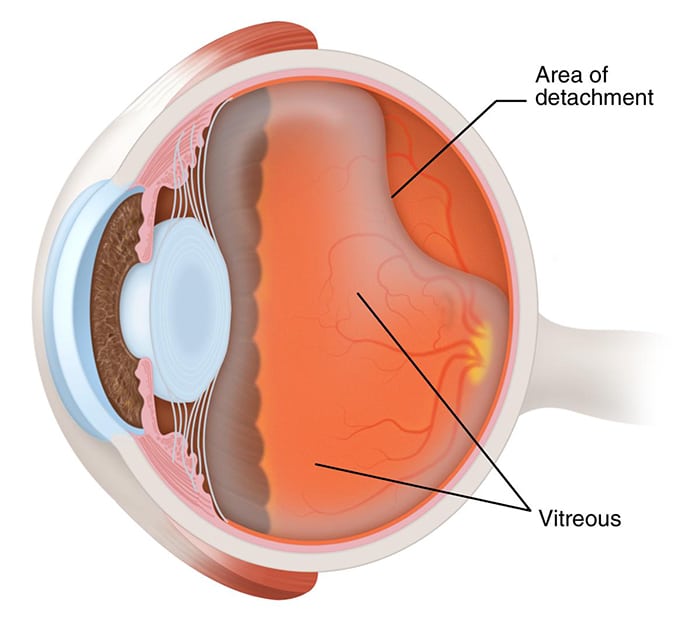While posterior vitreous detachment (PVD) itself is normal and is not harmful to the eye, the symptoms can be frustrating. In the vast majority of cases, PVD does not pose any long term changes to the eye. PVD happens when the vitreous body, the gel-like substance that fills the center of the eye, starts to shrink and pull away from the retina. This is a common occurrence and happens as we age.
As we get older, the structures that make up your eye begin to change, including the vitreous gel inside of your eye. Normally, the vitreous gel is stiff, jelly-like and able to keep its shape. As you age, the vitreous becomes more watery and not able to properly keep its shape, so it pulls away from the retina. This is a natural change in the eye, and over 75% of the population over 65 will develop PVD. PVD is not a sign of eye disease or health problems.

Symptoms
Symptoms of PVD include floaters and flashes, which should be checked by an ophthalmologist immediately. The symptoms for PVD and retinal detachment are very similar, so it is advised that anyone experiencing flashes and floaters contact their ophthalmologist. Retinal detachment is a very serious, vision-threatening condition.
Treatments
As of right now, there are no treatments for PVD. While research is being done, there is no significant evidence that eye exercises, diet changes or vitamins will help PVD symptoms. While the symptoms of PVD can be annoying, they usually calm down over time and become unnoticeable. The flashes will become less frequent, and some floaters will disappear, while your brain learns to ignore the others.
If you are experiencing the symptoms of PVD, remember that it is very important to see a doctor at Takle Eye Group for proper diagnosis. Call today to make your appointment!




